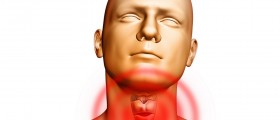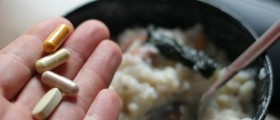Information on Ferritin Deficiency
Ferritin deficiency can be described by certain characteristic symptoms. Those usually include dry skin, thyroid problems, and a feeling of extreme tiredness. Ferritin is actually a protein that is commonly produced in the human body, and its main purpose is to store iron. It is one of the most important constituents of the blood.
Those who have low levels of ferritin usually suffer from iron deficiency. Low levels of ferritin can be detected by running certain blood tests. Ferritin deficiency can be triggered by internal bleeding and bleeding during the menstrual cycle.

Symptoms of Ferritin Deficiency
When the levels of ferritin get decreased below the normal range it is very hard for the human body to hold iron, as the reserves of iron gradually diminish the person starts feeling the symptoms of iron deficiency.
Chronic fatigue is one of the most common symptoms of ferritin deficiency. Another issue that is often affiliated with low levels of ferritin is a significant decrease in the levels of energy. Exhaustion, lack of stamina, inability to perform physical activities, tiredness, and intolerance to moderate levels of physical activity are among the most common symptoms of ferritin deficiency. Another important symptom of ferritin deficiency is the premature hair loss. This occurs because ferritin is one of the most important constituents of hair follicles.
The symptoms of ferritin deficiency may also include numerous different types of thyroid problems, such as low thyroid levels. This medical condition is usually referred to as hypothyroidism, and it may lead to certain other serious medical conditions, such as fatigue and irregular bowel movements. Ferritin can also be found in the skin as it is located below the epidermis. Low levels of ferritin may cause the skin to become pale and dry. Ferritin deficiency is also one of those medical conditions that may be affiliated with brittle nails.
Inadequate levels of ferritin lead to certain nail abnormalities. Ferritin deficiency may also lead to pagophagia. It is an eating disorder which involves an unusual craving for ice. Ferritin deficiency can be treated using several different methods. The most common way is to use numerous different types of iron supplements.
All iron supplements need to be taken according to the prescribed dosage because an overdose may lead to certain serious medical conditions. It is always wise to consult a doctor before taking any iron supplements. It is also a good idea to ingest certain types of food that are rich in iron. Those types of food include green leafy vegetables, egg yolks, and dried fruits.
- It is an important public health problem in Australia. The World Health Organization (WHO) estimates that 8% of preschool children, 12% of pregnant women and 15% of non-pregnant women of reproductive age in Australia have anaemia, with iron deficiency being the major cause.
- Approximately 70% of the iron in adults is found within haemoglobin in red blood cells so anaemia is the most readily recognised effect of iron deficiency. However, it is now apparent that iron deficiency in the absence of anaemia also has unfavourable consequences.
- Iron deficiency can occur secondary to inadequate dietary intake, increased requirements (e.g. pregnancy and breastfeeding), impaired absorption (e.g. coeliac disease, bariatric surgery), or blood loss (e.g. menstrual, blood donation, gastrointestinal). A drug history should be taken particularly regarding anticoagulants, over-the-counter non-steroidal anti-inflammatory drugs and antiplatelet drugs. The underlying cause of iron deficiency should always be sought and managed.
- Oral iron therapy is the first-line and safest treatment for symptomatic patients or patients at risk of developing anaemia. It is convenient and cost effective. A number of different iron supplements are available in Australia, however, ferrous salts (fumarate, sulphate, gluconate) are preferred as they are the best absorbed.
- After oral supplements have been taken for 60–90 days, fasting iron studies are repeated one week after stopping therapy to check if the iron deficiency has been corrected. Serum iron has a diurnal variation and the ideal specimen is a fasting morning sample after oral iron supplementation has been withheld for at least 24 hours before testing. If repletion has not occurred, re-investigation is recommended. Iron studies should be repeated approximately 60–90 days, or as clinically appropriate, after intravenous iron therapy.
- www.nhsinform.scot/illnesses-and-conditions/nutritional/iron-deficiency-anaemia/
- www.hematology.org/education/patients/anemia/iron-deficiency
- Photo courtesy of Jawahar Swaminathan and MSD staff at the European Bioinformatics Institute via Wikimedia Commons

















Your thoughts on this
Loading...